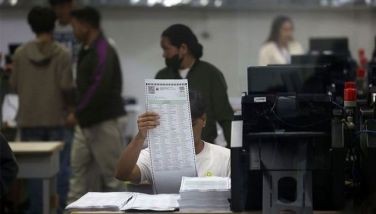#Journeyto30 In the eye of the storm
MANILA, Philippines - Rains induced by Typhoon Butchoy has pounded much of Luzon over the last few days, leaving many parts of Metro Manila and surrounding provinces flooded.
In neighboring Taiwan, the typhoon lashed the island with winds of up to 234 kph. It is currently in Southern China, making the ongoing flooding there even worse.
But Butchoy is nothing compared to the strongest typhoon to ever make landfall – Super Typhoon Yolanda.
The storm, etched in the collective memory of people in the Visayas, still strikes a delicate chord.
When it made landfall on Nov. 8, 2013, it had an estimated one-minute sustained winds of 315 kph. With such power, it created storm surges as high as six meters that inundated coastal communities in Eastern and Central Visayas. Among the most devastated was the regional center of Tacloban City and the coastal town of Guiuan, Eastern Samar.
It was the deadliest typhoon in Philippine history, killing at least 6,300 and, according to the United Nations, affected about 11 million people, many of whom were left homeless. In the aftermath of the typhoon, dead bodies lay unburied on the roadsides in Tacloban and other parts of the affected region. Thousands lived in temporary shelters provided by the national government and various aid agencies.
The catastrophe exposed the unpreparedness of the local and national governments to respond to a calamity of such scale.
While the Philippine Atmospheric, Geophysical and Astronomical Services Administration (PAGASA) and the National Disaster Risk Reduction Management Council (NDRRMC) warned affected communities of the typhoon’s strength and potential storm surges, many communities seemed to have underestimated these warnings.
Some locals claim to not understand the concept of “storm surge” and ignored it, hence, the huge death toll caused by the rampaging seawaters. Most of the families evacuated were transferred to areas that weren’t able to withstand the storm and the accompanying storm surge.
Government disaster response was painstakingly slow and inadequate. The relief goods it prepositioned in the affected areas quickly ran out. If not for the outpouring of foreign aid and volunteers who helped pack and distribute relief goods, the humanitarian crisis that the disaster created would have lasted longer.
Once the relief and rehabilitation efforts gained momentum, it was all uphill. Roads were cleared, bodies collected and buried, temporary shelters were built and water and electricity restored. By the middle of last year, everything seemed back to normal. The speed of the recovery was even praised by the Asian Development Bank (ADB) and the United Nations Development Program (UNDP).
Nevertheless, various problems and issues persisted, such as the politicization of aid and corruption. Many local communities complained that they were denied relief because their leaders were not allied with the ruling party. Agencies such as the Department of Social Welfare and Development (DSWD) was questioned over issues of misuse and malversation of foreign aid.
The issue of corruption in the aftermath of the typhoon remains unresolved and speculative, and was a bone of contention during last May’s elections and even up to today.
Typhoon Yolanda taught the nation many lessons on disaster preparedness and response. It taught us the value of greater awareness, coordination and cooperation during such calamities. Once more, it brought out our sense of bayanihan, when it encouraged many of us to donate financially and in kind, as well as take in evacuees flown to Metro Manila from the affected areas.
But we have many more lessons to learn. This is particularly crucial for local communities that are vulnerable to different natural disasters but do not have disaster preparedness and response plans. In a country visited by at least 20 typhoons in a year, we have at least 20 opportunities for learning and practice.
Indeed, in any kind of situation, the one thing that spells the kind of outcome we want is our response to it.
- Latest
- Trending
































